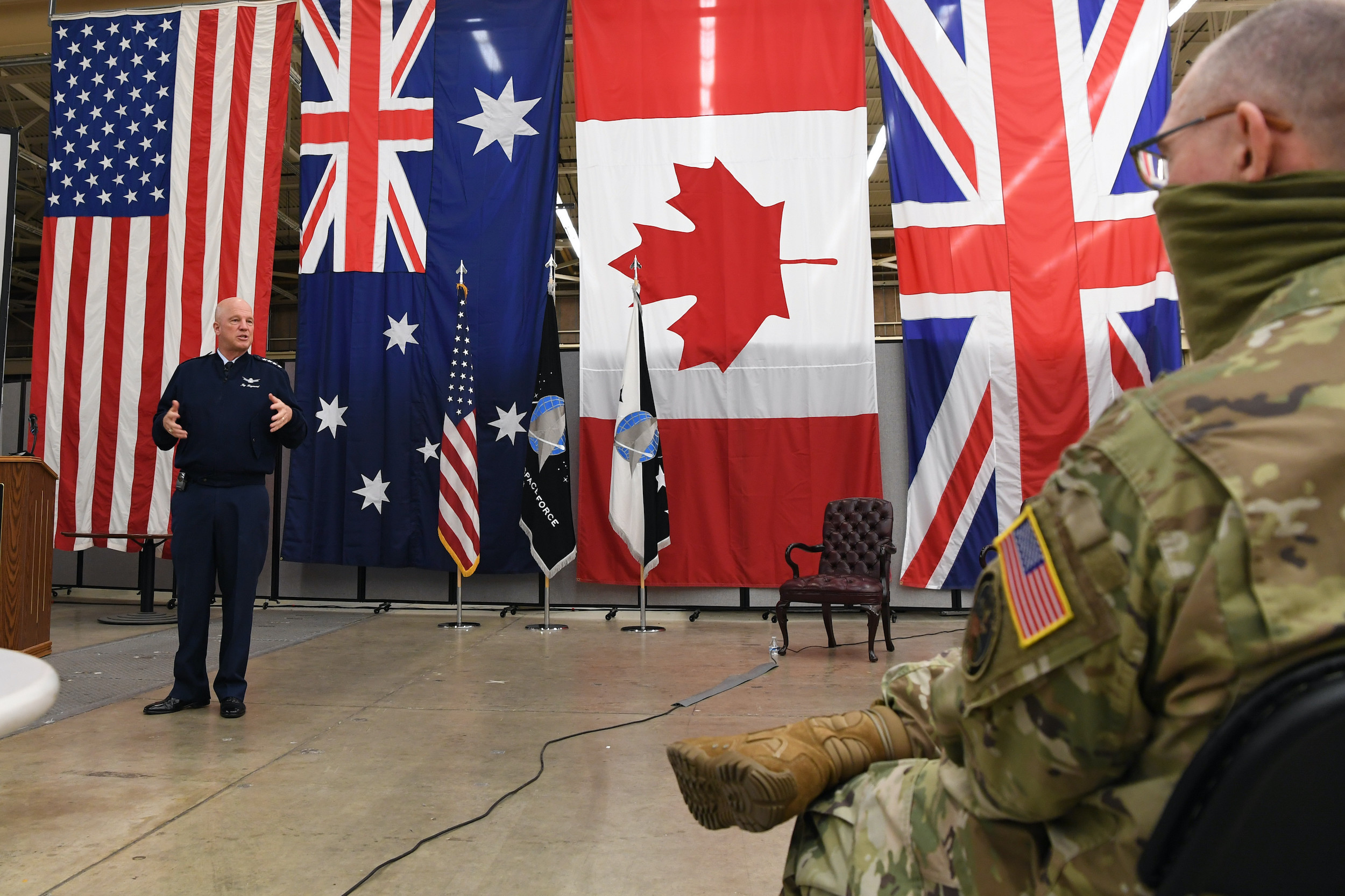The Spacepower document is the Space Force’s first capstone doctrine
WASHINGTON — The U.S. Space Force on Aug. 10 issued a new guiding document for the use of space in military operations.
The document titled “Spacepower” lays out a vision for what the space branch of the armed services will do, and explains why the United States considers space a domain of warfare.
“This is the Space Force capstone doctrine,” Chief of Space Operations Gen. John “Jay” Raymond said in an interview with SpaceNews.
The Army, Navy and Air Force have sets of principles for operations on land, at sea and in the air that define their identities. The Space Force is now developing its own theories and concepts, Raymond said.
The Space Force was established on Dec. 20, 2019, as a separate branch of the armed services under the Department of the Air Force. Up until now, the only doctrine for space operations existed in the Air Force.
“We felt as an independent service we needed to be able to articulate what we believe, and develop the doctrine of space power.,” said Raymond.
The 64-page capstone document, Raymond wrote in the introduction, “answers why spacepower is vital for our nation, how military spacepower is employed, who military space forces are, and what military space forces value.”
The Space Force doctrine says the United States must have military capabilities in space to protect national assets such as communications and GPS satellites, as well as offensive weapons to deter adversaries from hostile actions.
Raymond, who also serves as commander of U.S. Space Command, insists that the United States wants space to remain a peaceful environment. “Our goal is not to get into a conflict, we want to deter it,” he said. “But if deterrence were to fail, then we need to protect our ability to conduct the joint and coalition fight.”
Raymond described the capstone document as the “foundation of our professional body of knowledge as we forge an independent military service committed to space operations.”
He said the space doctrine was a grassroots effort written by a group of about 20 officers “from the rank of colonel down to tech sergeant,” Raymond said in the interview. “They got together on their own, and wrote this.”
The document will serve as a frame of reference for current leaders and for the development of training and education programs going forward.
Before its release, Spacepower was reviewed by the Defense Department and shared with leaders of allied nations, said Raymond.
“We’re not saying that it provides all the answers, but we think it’s a great start,” said Raymond. “And I think it will drive an intellectual conversation on space power in the years ahead,” he added. “Doctrine is not a stagnant thing, it continues to evolve.”
Space power is both civilian and military
The space doctrine is organized into five sections: Space Domain, National Spacepower, Military Spacepower, Employment of Space Forces and Military Space Forces.
A central theme across the document is that the success of the Space Force depends on its ability to coordinate strategy and operations with the other U.S. military services and international allies.
“Military spacepower achieves its greatest potential when integrated with other forms of military power,” the doctrine says.
The document also makes a point that access and control of space is not just a military concern but a national one due to the role of space in the global economy and the world’s increasing dependence on space for critical products and services.
“Space is simultaneously a source and conduit through which a nation can generate and apply diplomatic, informational, military and economic power,” the Space Force document says. “The United States must cultivate, develop and advance spacepower in order to ensure national prosperity and security.”
Military space forces, the document says, have a duty to “preserve that prosperity and security.”
Raymond said the notion that the military provides security to civilian space assets also is supported by U.S. Space Command’s Unified Command Plan.
The DoD, the U.S. military services, partner agencies and allies, the command plan says, have the responsibility of “protecting and defending U.S. and, as directed, allied, partner, and critical commercial space operational capabilities.”
